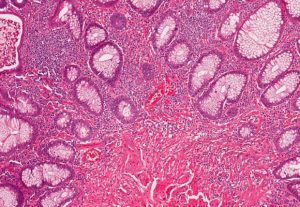
We commonly notice mucus when we’re sick. We cough it up or blow it out through our noses when we have a cold or flu. Its color can indicate the type of illness—virus or bacteria.
When is mucus in stool normal?
Mucus is a slippery, naturally occurring substance that lines many cavities in the body. Often times, mucus is not visible to the naked eye, but it is found in many secretions of the body. Mucus is produced by cells found in the mucous membranes of the digestive system. It’s also found in other organs that require their top most cellular layer (the epithelium) to be kept moist. Mucus also serves as a layer of defense, helping prevent harmful germs from entering the body.
It can be found in the nose, throat, lips, ears, eyelids, genital tract, anus, and intestines. It serves to help trap bacteria, viruses, and fungi. It also contains antiseptic enzymes that help kill foreign invaders. Mucus also serves as lubrication for these orifices, preventing them from drying out and cracking, which would leave them vulnerable to attack. Mucus in the digestive track helps stool pass through the gut with ease.
Having mucus in the body is an absolute necessity, but overproduction could signal that there is a problem with the body. Too much mucus in stool can be a sign of digestive problems stemming from bacteria overgrowth or issues with digestive enzymes. While this sign of increased mucus is not harmful in itself, it can be used as a clue to find a more precise diagnosis.
What causes mucus in stool?
Having excess mucus in stool can be the result of many different conditions. Specific amounts of mucus in the intestines exists normally as it helps protect the body from potential pathogens. Certain conditions leading to inflammation can break down this layer of defense, leading to increased amounts of mucus in our stool. The following are conditions that may lead to more mucus in the stools:
- Crohn’s disease: An inflammatory bowel disease that affects the gastrointestinal tract. This condition often presents with diarrhea or fatigue.
- Cystic fibrosis: A genetic disorder that results in thick, sticky mucus that can build up in the lungs, pancreas, liver, or intestines.
- Ulcerative colitis: An inflammatory bowel disease that results in long-term inflammation in the large intestine or rectum.
- Irritable bowel syndrome: A relatively benign condition that results in symptoms such as abdominal pain, cramping, and diarrhea. A defining trait of this condition is symptoms disappearing upon defecation.
- Intestinal infection: Bacteria such as salmonella or shigellosis, often contracted from eating contaminated food, can lead to an intestinal infection and increased mucus in the stool.
- Parasitic infection: An organism that can cause a variety symptoms, including increased mucus production. Parasites are the cause of malaria which is spread by mosquitos. Trichomonas is another form of parasite that is sexually transmitted.
- Malabsorption issues: This occurs when issues with the bowels make it unable to properly absorb certain nutrients. Malabsorption conditions include lactose intolerance and celiac disease.
- Anal fissures: This occurs when the anal lining is subjected to a small tear. Because people defecate every day, it can make healing of anal fissures very difficult. Therefore, most of those effects lead to constipation. Anal fissures may be related to an inflammatory bowel disease such as Crohn’s disease or ulcerative colitis.
- Anal fistulas: A fistula is an abnormal connection between two separate structures. This may occur when an anal abscess or cavity heals improperly or is left untreated.
- Colon or rectal cancer: These conditions may result is symptoms such as bloody stool, rectal bleeding, and unintentional weight loss.
Diagnosing and treating mucus in stool
Having increased amounts of mucus in the stool is a very non-specific symptom, as many conditions or even normal physiology may lead to it. Often, when increased levels of mucus in the stool is found, your doctor will try to find the underlying reason why. By taking a complete history of your presenting symptoms, and full picture of your current situation can be assessed, leading to an accurate diagnosis.
After performing a physical exam, your doctor may want to do some testing. This will give a more definitive look at your basic physical health and a better understanding of what may be going on in your digestive system. These tests may include:
- Blood test
- Stool culture
- Urinalysis
- Colonoscopy
- Endoscopy
- X-Ray, pelvic MRI, or CT scan
- Sweat chloride test
Often, clues from these diagnostic tests will lead to a diagnosis and proper treatment. If the reasoning’s for your particular case of mucus in the stool is still uncertain, additional tests may be ordered.
Anti-mucus diet
When we’re sick, we often notice a large buildup of mucus. Food can play a large role in the amount of mucus we have, so in order to minimize and reduce it, you should enjoy an anti-mucus diet. An anti-mucus diet consists of:
- Avoiding foods you’re allergic to
- Foods which contain or produce histamines like fish, eggplant, tomatoes, pineapple, and fermented foods (to name a few)
- Sugar
- Salt
- Food additives
- Cabbage
- Meat
When ill, avoiding the above foods will ensure you don’t produce more mucus. Below are foods that decrease mucus in the body:
- Nuts
- Seeds
- Celery
- Watercress
- Onions
- Lemon juice
- Olive oil
- Parsley
- Hummus
- Vegetables
By combining many of these anti-mucus foods together, you can reduce the amount of mucus produced much quicker and get on track to feeling better.